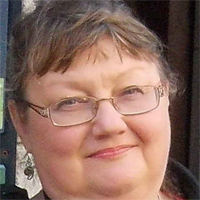The ancient, pagan Celts had celebrations about every six weeks that was linked to the equinoxes and solstices. The many megalithic tombs still found in Ireland today have alignments with astronomical events. Along with the vernal and autumnal equinoxes and the winter and summer solstices, there are the Cross Quarter days associated with ancient fire festivals. All these Cross Quarter Days were generally three day festivals, beginning at sundown on the eve of the feast day.The Celtic calendar, or Wheel of the Year as it is sometimes called, is also reflected in modern Irish culture.
The first of these Cross Quarter days is St. Brigit’s Day. This is also known as Imbolc. The festival begins on 30th January with many customs associated with welcoming the saint whose feast is the harbinger of springtime. St. Brigit’s Feast Day is 1st February. In many places around Ireland people still weave the traditional St. Brigit’s crosses from the newly green rushes. Along with the harp, the St. Brigit’s cross is one of the symbols associated with Ireland. St. Brigit was said to maintain an eternal flame t her monastery in Kildare, so the fire symbolism of what had been a pagan festival became Christianized. The eternal flame was rekindled in 1992 by the Brigidine order of nuns who maintain it in there convent in Kildare, Solas Bríd.
Next is Bealtaine or May Day. This was considered the beginning of summer. Cattle were sent to their summer pastures. But first, they were run between two smoky bonfires. It is thought that this ceremony was a way of fumigating the cattle of pests.
Lunasa(also known as Lammas) is the Harvest festival, celebrated from 31st August until 2nd August. In ancient Ireland the cutting of the corn and bringing in the hay allowed agricultural societies to have a brief respite from the hectic summer schedule. That pattern is still reflected in Irish society today with many local communities having some sort of festival at this time of year. Ballycastle in Co. Antrim holds a famous fair where the local delicacy is dulse and ‘yellow man’ sold during the Lammas Day Fair; the former is dried seaweed and the latter a very sweet, hard candy. Lunasa is also a popular time for people to visit holy wells and many still hold the traditional ‘pattern’ of prayers by people petitioning for a cure of an ailment.
Samhain is Halloween by another name. The three days of Halloween, the holy day of All Saints and All Soul’s Day (31st October, 1st and 2nd November) were in pagan times considered the Celtic New Year. Winter marked the slaughter of cattle that would feed the family through the harsh months to come. Samhain is marked by the hearth fire where, in the cold weather, the family would huddle around telling stories. Storytelling would be a traditional part of Samhain festivities these days. Halloween is a national holiday in both Northern Ireland and the Republic of Ireland.
These old fire festivals – Imbolc, Bealtaine, Lunasa and Samhain – also are the Irish language names for the months of February, May, August and November. As with many aspects of Irish culture, the ancient is woven into the modern day.

Printer Friendly Version

